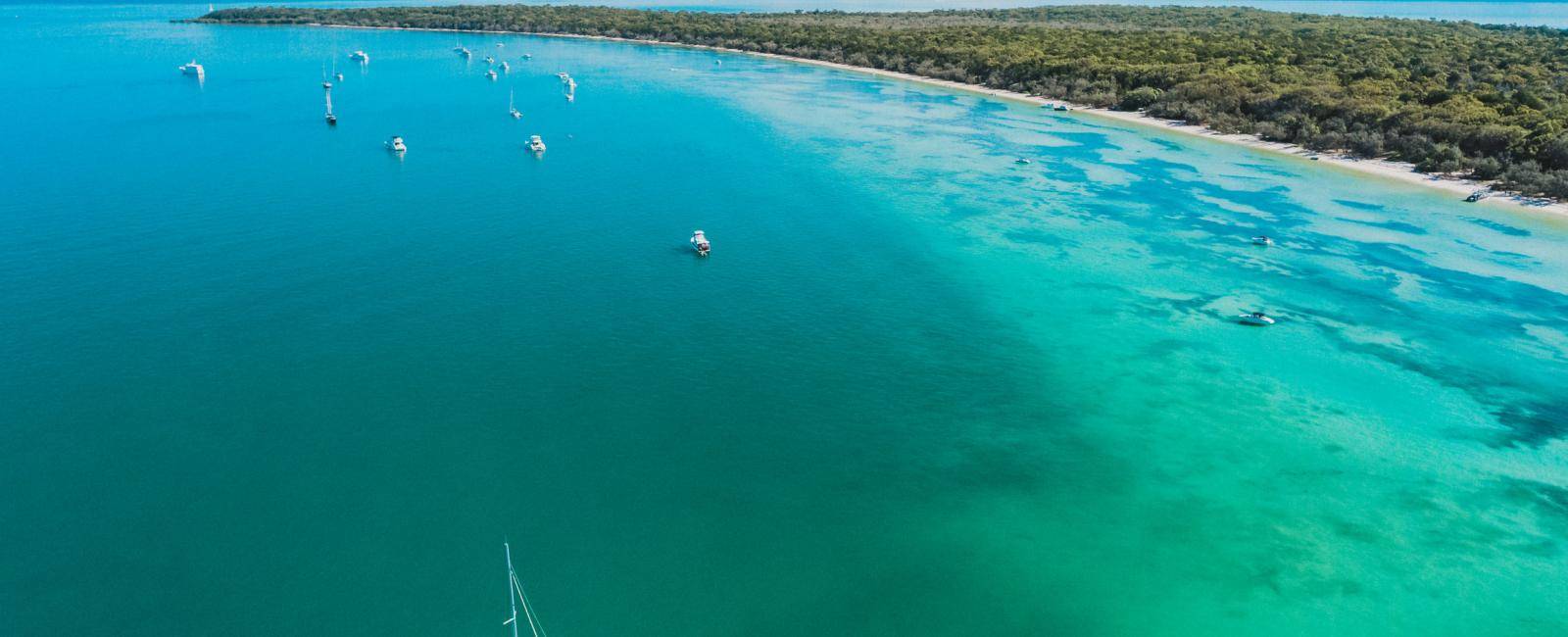Home to some of Australia’s most diverse wetland systems and rolling sandflats, the Moreton Bay region shelters numerous species of fish, birds, and other wildlife. As a neighbour of Moreton Bay, Brisbane Airport acknowledges that any disruption to this pristine ecosystem is minimised to ensure it remains thriving for years to come.
With the support of Brisbane Airport Corporation’s (BAC) Community Giving Fund ‘Protecting our Planet’ category, the organisations Reef Check Australia, Ocean Crusaders and Bribie Island Environmental Protection Association care for our natural environment one set of hands at a time. Additionally, BAC partners with consultancy companies such as Biodiversity Assessment and Management, who ensure all steps taken to minimise environmental disruption are well-informed.
Read on to learn more about these organisations and the impact they’re making when it comes to preserving and protecting the environment around us.
Reef Check Australia
Empowering the community to monitor the status of our reefs, Reef Check Australia is an Australian non-government organisation whose mission is not only to protect local reefs but revitalise areas that may have experienced damage.
Regularly encouraging community monitoring, Reef Check Australia has recently undertaken many restoration programs in Moreton Bay, specifically, Peel Island. After any major flooding event, the organisation observed a heavy decline in coral, with more algae and seaweed introduced to the region.
Dr Mark Gibbs, Reef Check Australia volunteer, highlights the challenges in protecting the reef, “Moreton Bay used to have a lot of beautiful coral reefs. We've lost most of those through activities like mining for cement, but also as the catchment has developed. There are more factors at play; as the world gets warmer and the ocean gets warmer, the distribution coral is moving furthest away from the equator.”
Utilising Brisbane Airport’s grant, Reef Check Australia have been able to establish Peel Island’s restoration program, which is the first of its kind in the region. Installing ‘reef spiders’, wired structures for coral to grow from, Reef Check have created multiple sites that have become a coral refuge.
Essential to Reef Check Australia’s program, the grant contributes to the logistics needed for the organisation to run.
“Because we're diving here, we have to maintain very high professional health and safety requirements. The boats we use are commercial vessels that have to be funded. These sorts of grants, as provided by Brisbane Airport Corporation, are essential,” said Mark.
Ocean Crusaders
Founded in 2010, Ocean Crusaders clean the Moreton Bay waterways one piece of rubbish at a time. Home to thousands of fish nurseries, bird species, dolphins and migrating whales, Ocean Crusaders' goal is to reduce the human impact on the region.
Annika Thomson, Director at Ocean Crusaders, explains the wildlife rely on the shelter of the bay “It's so important for all the whales, dolphins and the immigrant birds that come here, who have been counting on this piece of land for thousands and thousands of years.”
Anything that is dumped in Brisbane waterways is eventually found in the bay’s waters. Some days Ocean Crusaders will have 50 tyres within the mangroves, along with countless plastic and beer bottles, glass, bottle caps and bait bags.
Built around community collaboration, Ocean Crusaders with the support of Brisbane Airport’s Community Giving Grant can continue to purchase and maintain their commercial vessels to clean the surrounding waterways.
Bribie Island Environmental Protection Association
With 45 years of experience caring for Bribie Island, the Bribie Island Environmental Protection Association (BIEPA) oversee the protection of the island’s flora and fauna.
Everything from toad busting (removing toad and toad eggs from the environment) to observing wildlife, recording wildlife and bio habitats, to weeding, planting and maintaining the rich biodiversity on the island.
Compared to the biodiversity of a desert, Bribie Island is faced with several verges, which are areas of low vegetation as explained by BIEPA volunteer Angela Armitage.
“Verges will typically look like grass fields, where BIEPA are turning these areas into habitats that will entice insects and pollinators, through planting local flora,” said Angela.
Brisbane Airport’s grant assists BIEPA in acquiring the required supplies to undertake its protective and restorative processes.
“The grant has been marvellous because it enables us to buy plants and fertiliser and the materials we need to do the work,” said Angela.
Biodiversity Assessment and Management
Based in Cleveland, Brisbane, Biodiversity Assessment and Management (BAAM) is an ecological consultancy organisation that has been providing a variety of ecological assessments and monitoring to Brisbane Airport Corporation for the past 10 years.
With the development of Brisbane Airport’s parallel runway, BAAM is keeping a close eye on the population of migratory shorebirds in the region.
There are between 1,000 to 2,000 migratory shorebirds that populate the Moreton Bay region, and the construction of the runway had the potential to disturb the area’s biodiversity if not carefully planned. With the construction of a new shore wall and a lighting structure in the bay, many steps were taken to minimise environmental impact.
BAAM Principal Ecologist Penn Lloyd explained, “to reduce the disruption on the migratory shorebirds, construction was delayed until winter when the birds were in the northern hemisphere. There was potential for impact due to an increase in air traffic, but the monitoring shows there has been no significant impact.”
Over the last 12 months, Biodiversity Assessment and Management have been able to monitor the local shorebirds around Brisbane Airport.
Penn shares that this includes monitoring “coming and leaving times and population size.” They found that there was no significant change in the shorebirds’ migration or population size.




